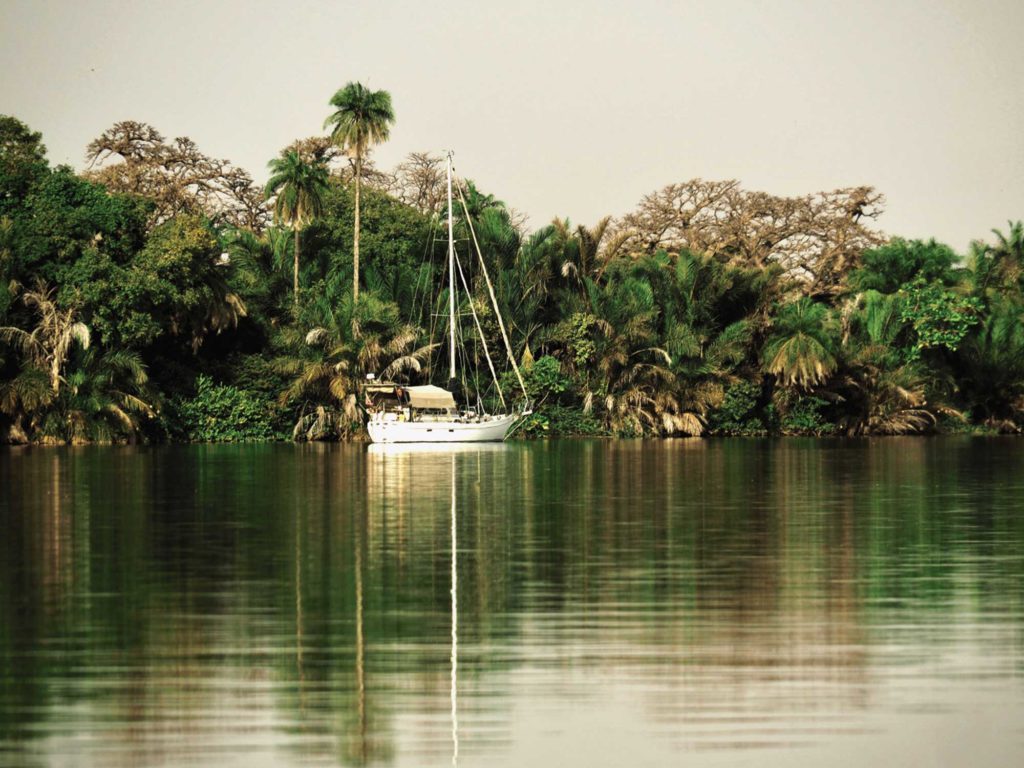
When we cruised into Banjul—the dusty, bustling capital city of Gambia, on the western coast of Africa—the customs agent knew exactly what he wanted.
“The office has run out of coffee, and the team doesn’t have enough money to buy any—ahem, ahem,” he said as we tried to clear in.
My first thought was that he at least had different taste in palm-greasing than the port captain, who was required to view our onboard stores but didn’t think he’d have the time if we bought him a Coke. At immigration, it was a $5 “donation” they needed from us to help the department buy its own boat.
Yes, this was our welcome after deciding to trade cruising amid coconut trees and tropical fish for cruising up a muddy river full of hippos and crocodiles. As we ventured onward, I wasn’t entirely sure what to expect.
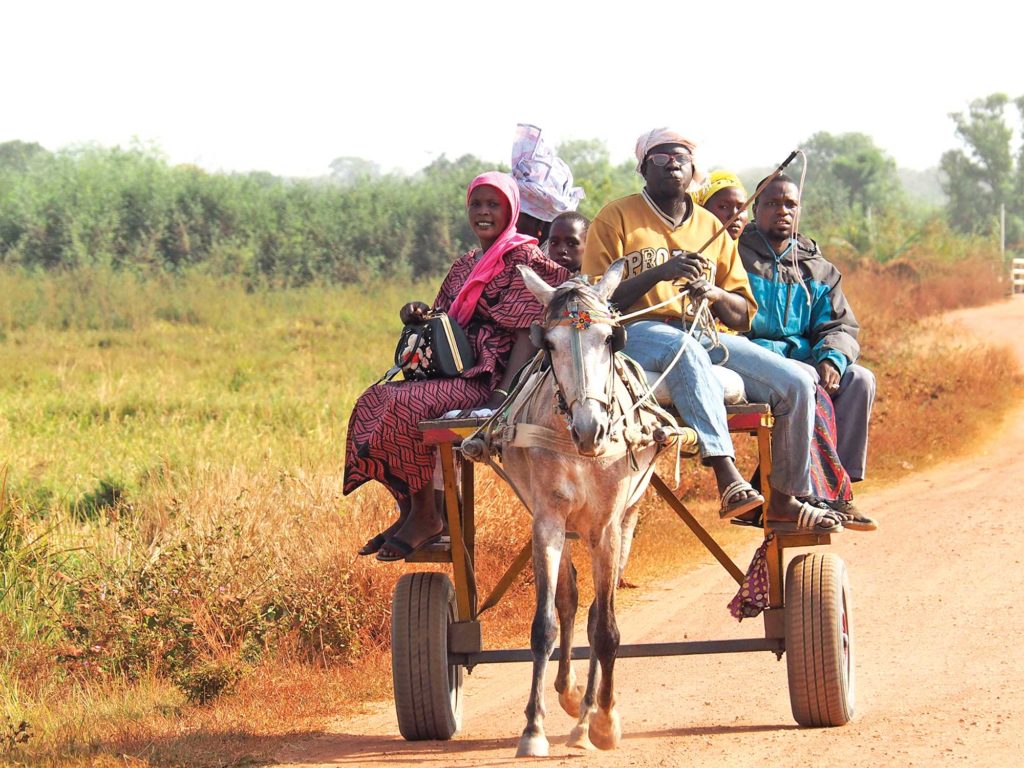
I’d first heard about Gambia from a German couple cruising in the Canary Islands. I’m a cruiser who likes to explore, and the more culturally diverse the places are, the better. Gambia receives just a handful of yachts each year, making it about as off-the-beaten-course as a destination can get. And so, we added it to our itinerary as a stopover destination between the Canaries and the Caribbean. We at least knew it would be different.
I’d had visions of sailing slowly up the Gambia River with the tide. When we got there, though, I had to learn to temper my expectations. This is no wide, Amazon-type river; there isn’t the distance between banks to make sailing practical. You need to tack as soon as you complete your tack, and continue running sails from port to starboard until you concede defeat and turn on the engine. We did sail, a little, but only when the wind was directly behind us and the tide was running with us.
We also encountered the Gambia Bridge, which cruising boats can get under with masts up to about 55 feet tall, but that’s it. This bridge serves as a barrier to some vessels from exploring the upper reaches of the river—and a trip to Gambia is all about those upper reaches. We ended up with only a foot of clearance from the VHF radio aerial in an intense moment when I had to make the call whether or not to proceed.
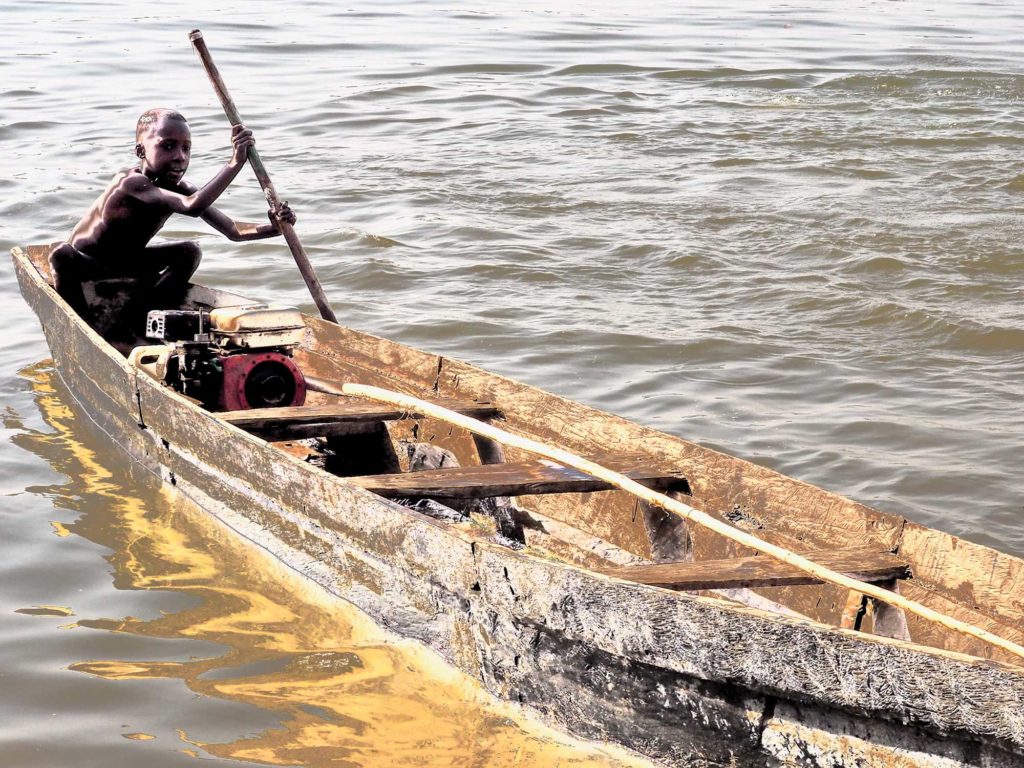
Other factors became evident once we were safely (whew!) on the other side of the bridge. The wider river turns into smaller creeks, offering secret hideouts to tuck into. The options aren’t always obvious because a creek’s entrance can get shallow before the water becomes deep again. With our draft of more than 7 feet, we often drew a line in the mud with our keel on our way into a creek. We’d then find ourselves nestled up tight amid the reeds. And we had to drop anchor directly in the creek’s center so as not to bump the mangroves on either side.
We also learned about who else lives along these small creeks: moths that love anchor lights at night, and vicious mosquitoes whose itchy bites last for days. Fortunately, we had a three-tier netting system: netting around the cockpit for the worst of times, netting for the hatches and companionway as standard use, and netting above the beds in case barriers one and two were breached. There wasn’t a night we weren’t thankful for the sanctity of our impenetrable fortress.
What’s missing from this river is consumable water. The river is muddy all the way up its reaches, so using a watermaker is ill-advised unless you have a bilge full of filters. We filled our 370-gallon tank with water from the community well before departure, and used water sparingly. We washed our bodies, clothes and dishes in river water, and used our tank water exclusively for drinking and cooking. This meant scenic deck showers in the early evenings, a hose dragged through the cockpit to fill the sink, and white-turned-brown clothes pegged on the rail to dry.
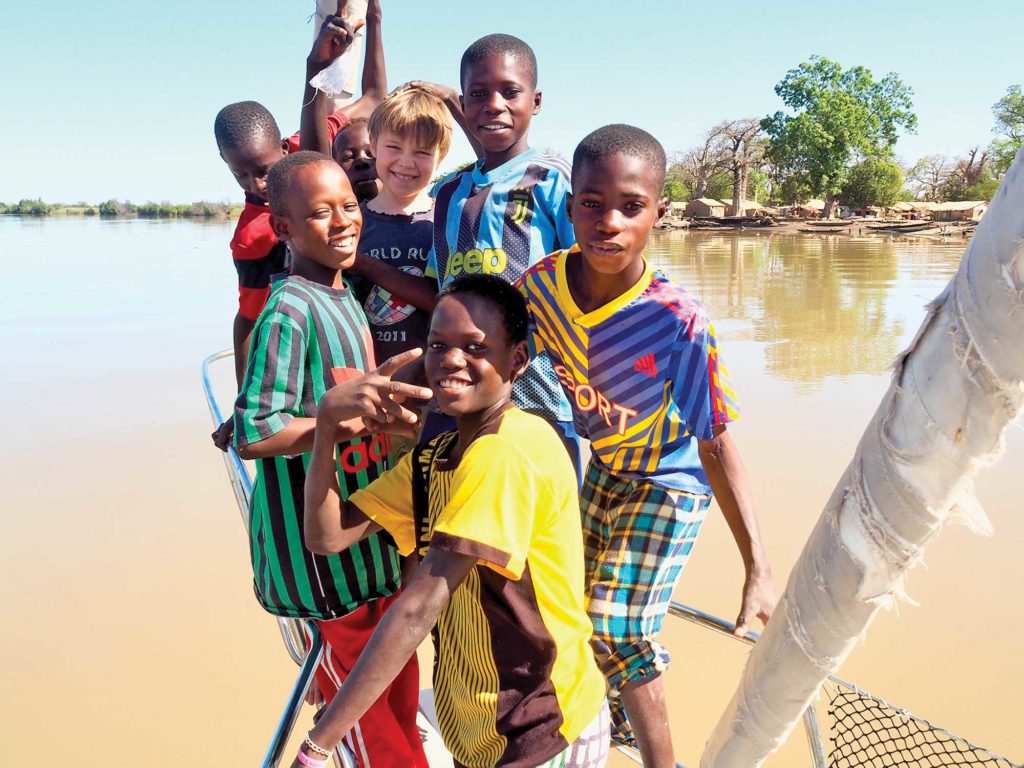
Food is also sparse outside the larger towns, and transport is difficult. If you aren’t up for a long and dusty walk, then your choices are a hot minivan or a rickety donkey cart. The cart is preferable because a limited number of bodies can fit atop it, though witnessing people being bumped off means your safety is not guaranteed. To me, it still beat being trapped inside a nine-person minivan with 30 other people along hot, dusty roads for the four hours it takes to move 12 miles. We’d get back to the boat in darkness, all for a sack of onions and potatoes.
What makes all of this worth it is the solitude and seclusion in Gambia. You can spend weeks up a creek hidden from the world, with only birdsong to remind you that other life exists. Villages are welcoming, but there’s no cruising community.
Another big difference is that as a longtime cruiser, I am used to the ripple of wind across water, the constant roll over gentle waves, and the swell of the ocean as if it breathes. It has been a long time since I’ve looked out over water that has no movement, no heartbeat, no breath. Yet, a muddy river can be full of vibrant color: blue, green, red, white, black. The water captures the life that surrounds it and tosses it back, with the sky, forest, sun, moon and people in beautiful, perfect reflections.
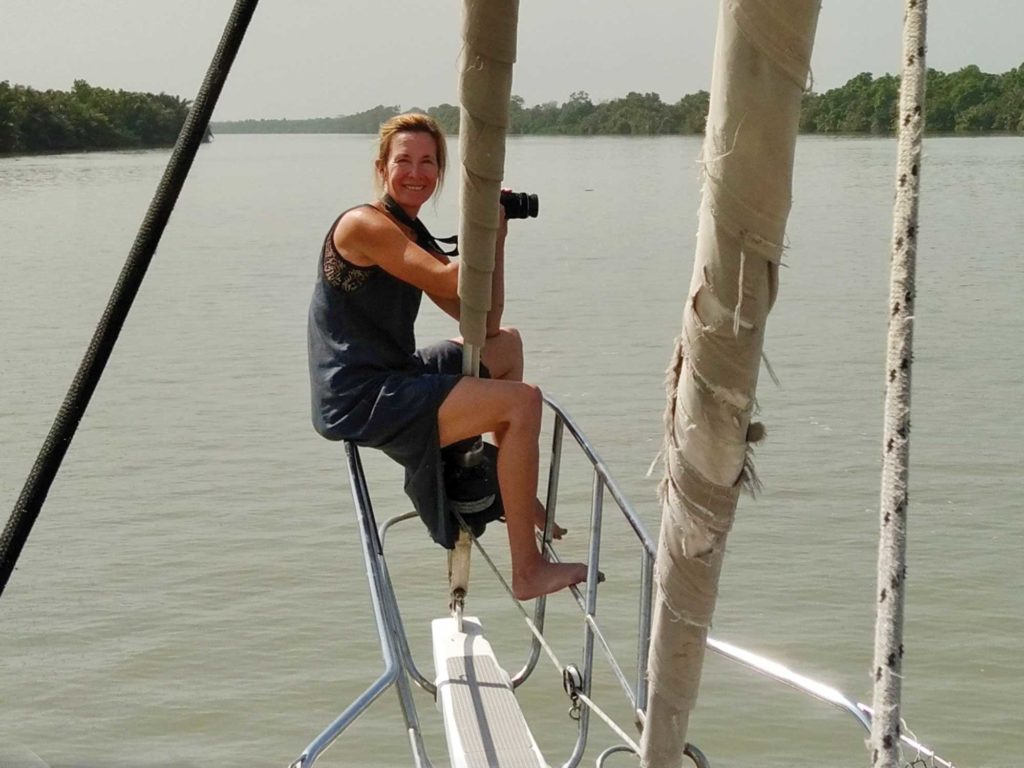
These river views dominate the country. Gambia stretches 350 miles from west to east, and the river runs the entire distance. The river is the country, as are the animals that depend on it. I was told that I’d see hippos and crocodiles; what I didn’t appreciate was that this was guaranteed. Trampled reeds and river access holes through the bush mark every creek.
On Christmas Eve, we took chimes up on deck in the evening to convince the kids that they’d heard Santa’s sleigh. A cute idea, until a hippo’s bellow drowned out the chimes. And instead of something that looked like Rudolph, a crocodile crashed through the reeds into the water about 15 feet from our anchor.
On New Year’s Eve, we sat in our tender watching crocs laze on muddy shores and hippos cool down in the shallows as men laid out their fishing nets. We also sat in our dinghy in the national park, watching a family of chimpanzees size us up from a tree overhanging the water only yards away. Dolphins were a pleasant surprise.
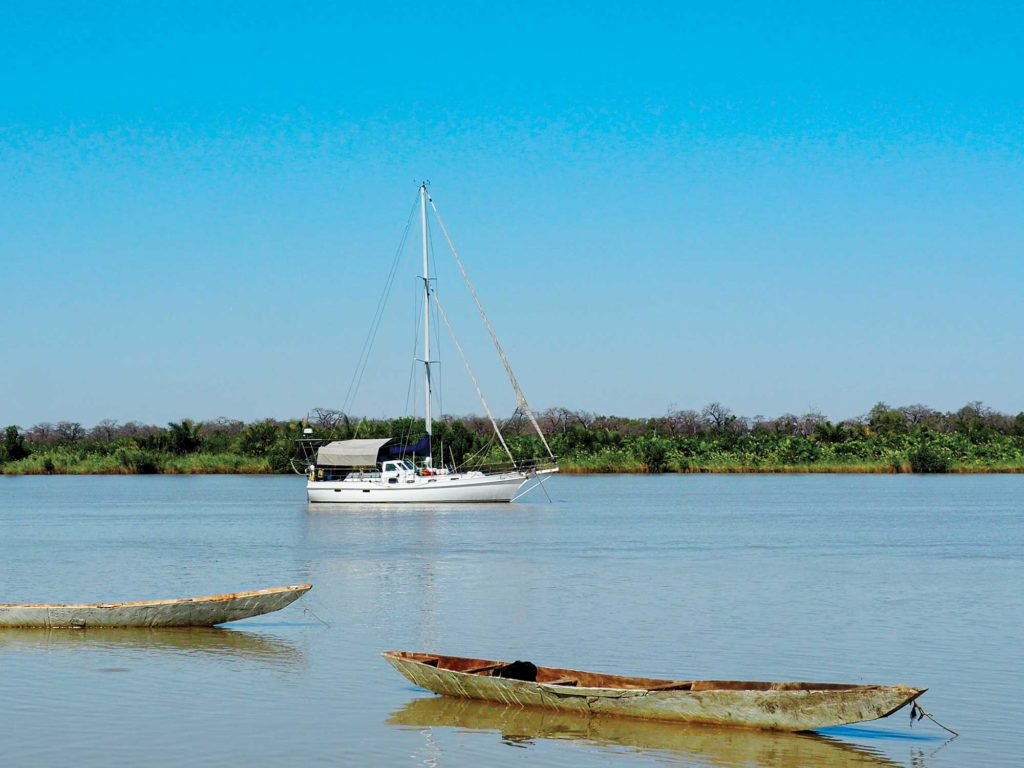
This is what it means to be surrounded by silence and nature. The magic of chance encounters with animals are entirely different than those typically seen by yacht.
As for the welcoming villages, they are everywhere. Invitations to visit are readily made by waving hands on the shoreside. If you aren’t drawn in by their visual signs of welcome, the people will paddle out in a pirogue—a long, narrow canoe made from a tree trunk—to deliver greetings in person. The children are gregarious and inquisitive, as children tend to be, but adults also extend a warm welcome. It helps that English is widely spoken.
Yes, these are developing-world locations, but I experienced little of the “give me” attitude we’ve encountered elsewhere. If anything, the handouts came the other way. I had more meals made for me, was asked to drink more tea, and was gifted more fish and vegetables than in any country I’ve cruised. Even the wood-carving peddler offered two additional carvings as gifts for the kids after I bought one small bowl. The batik artist gave my daughter a dress even though I didn’t purchase anything. Self-selected guides would offer to walk with us, making introductions along the way. It was fantastic to have an ambassador who helped us to experience a deeper layer of the community.
In one village, we were invited to join in a Christian ceremony, where we followed a man around town who was wearing a horned headdress and gourd-covered back. He represented the evil spirit of an animal that the community chased after to scare it away. I’m not sure what part of Christianity was being referenced, but in a predominately Muslim community, I don’t think that was what mattered. That the fruit bloomed and the vegetable gardens were safe was of much more practical concern.
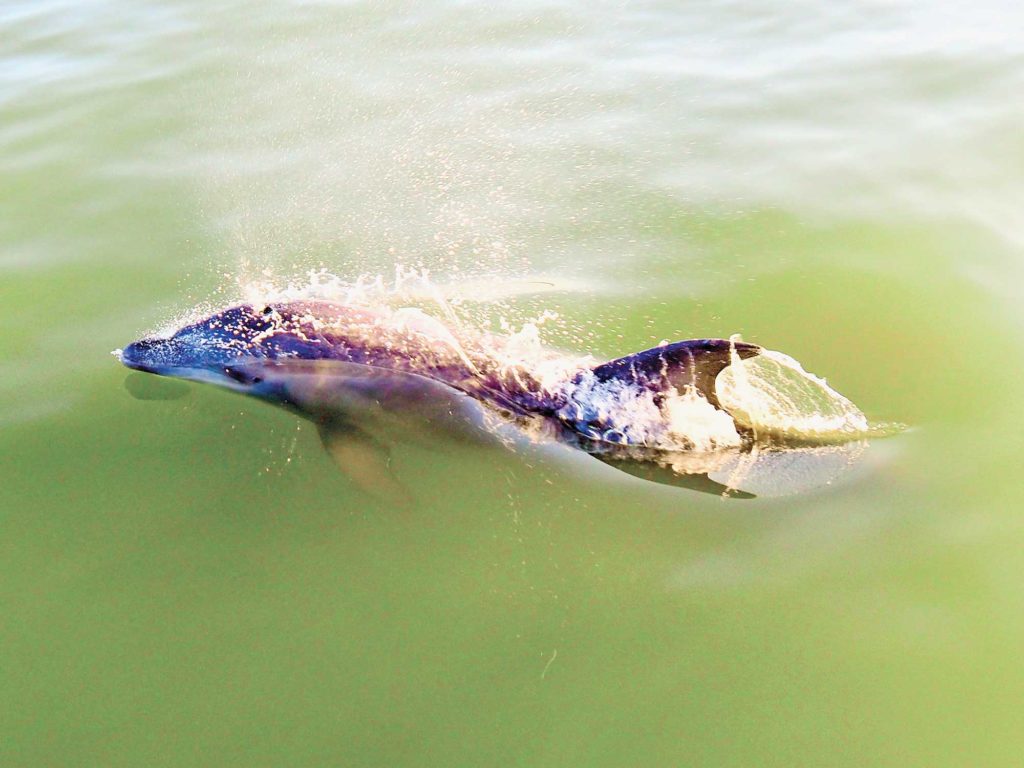
We were also invited to join a family in the naming ceremony of their newborn son. The day prior, we undertook the minibus journey to town to source fabric, track down a seamstress, and have a ceremonial outfit made. The next day, we were invited into the house to watch the 7-day-old’s head get shaved before his first appearance to the world. A continuous stream of women walked in with donations of rice because the new mother would be taking some time away from the fields. The community elders gathered, chanted and whispered the child’s name into his ear. There were prayers for his health and welfare, and then the name the elders selected was announced. The men and women sang and prayed as separate groups, followed by a shared bowl of sweet ground rice and betel nut. A shared lunch followed.
Again and again, I saw the passing of small change between hands, slipped over on a handshake. This way of interacting is taught from an early age. Everything is divided and shared. Kids split their half-nibbled cookies and gummi worms.
In that context, the port entry officials asking for a drink or a couple of dollars suddenly seemed a whole lot different.
We spent a portion of time at Lamin Lodge, which had fallen into disrepair, but where locals had established a daily communal meal to ensure that everyone was fed. The center of activity was usually under the trees between a bar that, due to the lack of electricity, sold soda from a chilly bin, and a restaurant that, due to the lack of clients, served only instant coffee. The 2 o’clock meal was most frequently served at 5 p.m., with the rice (95 percent), fish (4 percent) and vegetables (1 percent) cooked for several hours over charcoal in a large iron pot. They fry the fish in a gallon of vegetable oil and remove it before adding the veggies, herbs, and spices. Then they remove that and cook the rice in the richly favored oil. Three hours later, the meal is layered on a platter in reverse order and served.
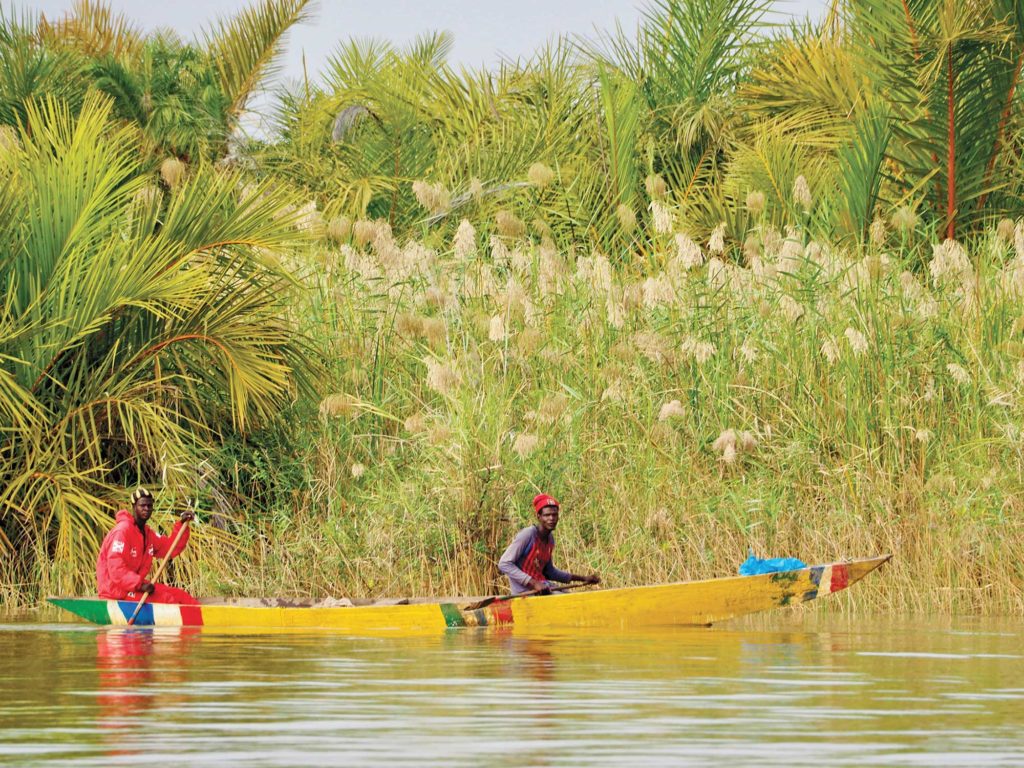
And let me tell you, the food is delicious. We’d sit in the dirt, eating with our hands from the communal platter with total strangers. It was a daily ritual of camaraderie, and it was hard to pull ourselves away when it was time to leave.
So, yeah, I’ll trade a few rum cocktails for a trip up the Gambia River. I’ll take the motoring in the silent, tranquil creeks. I’ll elbow through a mile of mud to sip tea with a stranger. I’ll battle a billion mosquitoes to hold a hundred little hands in my palm.
And now, I’m more than happy to buy a Coke for whoever wants one.
Kia Koropp and her husband, John Daubeny, have been cruising the Pacific, Southeast Asia, and the Indian Ocean for the past decade with their two children, ages 7 and 9, aboard the 50-foot Ganley Solution Atea.








